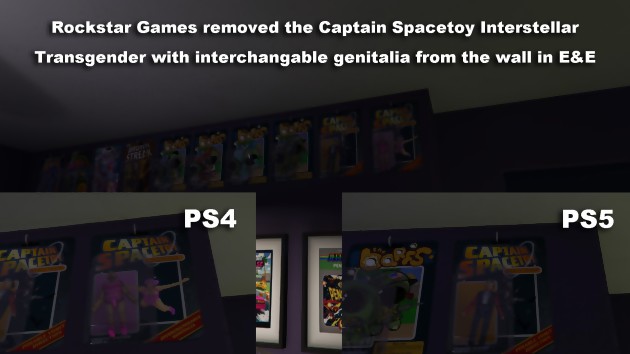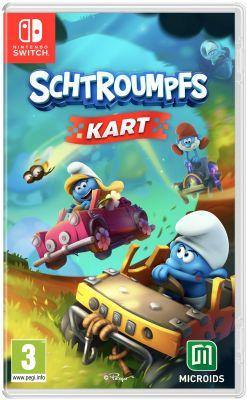 We are in 1964 and Peter, a lecturer at New Hall University in Cambridge, finds himself in a very bad position in the middle of Antarctica. The small plane carrying him has just crashed, and the pilot has injured his leg. From then on, our everyday hero will have to go in search of help from the surrounding bases, under the snow and by -20 degrees. If this context could have given rise to a survival game, it is indeed a narrative adventure that we are entitled to. Very quickly playable flashbacks, which alternate regularly with polar sequences, enrich our understanding of the situation. While working on an important climatological paper for the advancement of his career, Peter met Clara, another academic. A rapprochement, both professional and personal, naturally followed.
We are in 1964 and Peter, a lecturer at New Hall University in Cambridge, finds himself in a very bad position in the middle of Antarctica. The small plane carrying him has just crashed, and the pilot has injured his leg. From then on, our everyday hero will have to go in search of help from the surrounding bases, under the snow and by -20 degrees. If this context could have given rise to a survival game, it is indeed a narrative adventure that we are entitled to. Very quickly playable flashbacks, which alternate regularly with polar sequences, enrich our understanding of the situation. While working on an important climatological paper for the advancement of his career, Peter met Clara, another academic. A rapprochement, both professional and personal, naturally followed.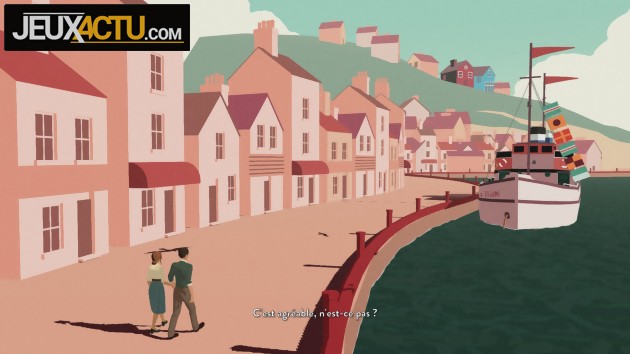
International issues and intimate moments perfectly capture the atmosphere of the 60s, deliciously old-fashioned and much softer and calmer than our hectic era. By favoring flat areas of pastel colors rather than the use of detailed textures, the artistic direction skillfully reflects this atmosphere.
 The game unfolds several interesting sequences, which address varied and important themes. Reflections on the Cold War, on the place of women in society or on the respect (or not…) of the Antarctic Treaty by the English, the Americans and the Soviets are thus mixed. International issues and intimate moments perfectly capture the atmosphere of the 60s, deliciously old-fashioned and much softer and calmer than our hectic era. By favoring flat areas of pastel colors rather than the use of detailed textures, the artistic direction skillfully reflects this atmosphere. It also benefits from several welcome tricks: cinematographic grain on the image, whole sections of scenery deliberately plunged into darkness (to better highlight what matters and leave room for the imagination) and skilful transitions between the two eras (a church takes instead of a mountain, a trip in the snow turns into a walk on the English roads…). The audio aspect is not to be outdone since it combines perfectly professional and convincing English voices, as well as sublime piano compositions which perfectly transcribe the emotion of the moment.
The game unfolds several interesting sequences, which address varied and important themes. Reflections on the Cold War, on the place of women in society or on the respect (or not…) of the Antarctic Treaty by the English, the Americans and the Soviets are thus mixed. International issues and intimate moments perfectly capture the atmosphere of the 60s, deliciously old-fashioned and much softer and calmer than our hectic era. By favoring flat areas of pastel colors rather than the use of detailed textures, the artistic direction skillfully reflects this atmosphere. It also benefits from several welcome tricks: cinematographic grain on the image, whole sections of scenery deliberately plunged into darkness (to better highlight what matters and leave room for the imagination) and skilful transitions between the two eras (a church takes instead of a mountain, a trip in the snow turns into a walk on the English roads…). The audio aspect is not to be outdone since it combines perfectly professional and convincing English voices, as well as sublime piano compositions which perfectly transcribe the emotion of the moment.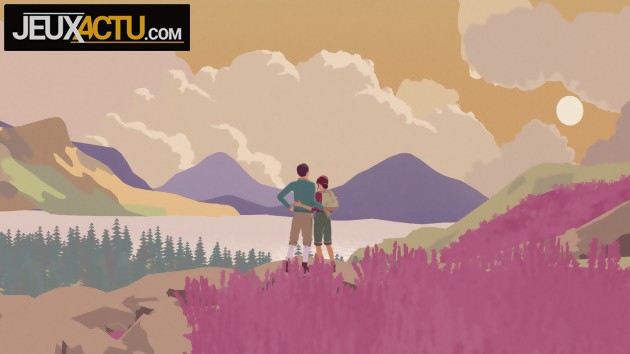
CONTEMPLATIVE GAMEPLAY
 The gameplay is limited to a minimum. A few sequences of basic movements, very rare objects to observe in the scenery, one or two summary actions (turn the wheel of a radio to find the right frequency), and that's it! The game connects the sequences like a movie would, and leaves very little room for interactivity. The main mechanism lies in dialogue choices, with two or three reactions generally being offered to us. The selection is made through a system of symbols and not sentences, which seems interesting at first sight but turns out to be quite confusing later on. A red circle corresponds to "panicked, perplexed or worried", a light blue circle to "caring, honest or open", a gray rectangle to "outspoken, fervent or affirmative", a sun to "enthusiastic, interested or curious", and a purple dot to "pessimistic, shy or depressed". These categories are both too vague and too broad, and it often happens that the character's reaction doesn't quite align with the player's original intent.
The gameplay is limited to a minimum. A few sequences of basic movements, very rare objects to observe in the scenery, one or two summary actions (turn the wheel of a radio to find the right frequency), and that's it! The game connects the sequences like a movie would, and leaves very little room for interactivity. The main mechanism lies in dialogue choices, with two or three reactions generally being offered to us. The selection is made through a system of symbols and not sentences, which seems interesting at first sight but turns out to be quite confusing later on. A red circle corresponds to "panicked, perplexed or worried", a light blue circle to "caring, honest or open", a gray rectangle to "outspoken, fervent or affirmative", a sun to "enthusiastic, interested or curious", and a purple dot to "pessimistic, shy or depressed". These categories are both too vague and too broad, and it often happens that the character's reaction doesn't quite align with the player's original intent.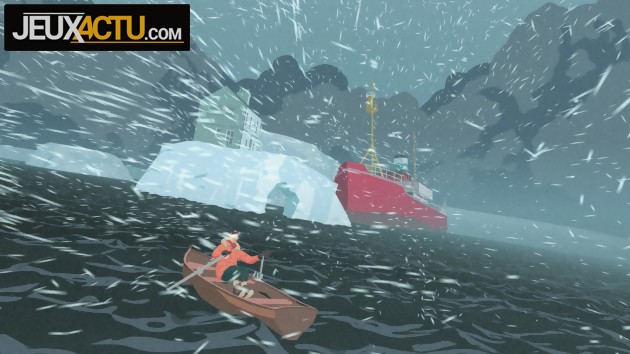
CIRCLE OF LIFE From time to time, more visual and explicit icons (plane, snow, silhouette, etc.) are still offered to us. Furthermore, the most important choices are indicated on the screen by the "storage" of the corresponding icon. Each subsequent major decision then gives rise to the temporary display of the various icons retained until then, until the final sequence. And there, beware of disappointment! While the adventure borrows the codes of interactive games with multiple branches, it is arranged by a scriptwriting artifice (not necessarily unwelcome from the pure point of view of the narration by the way) to offer only one and only end. Our choices therefore ultimately have almost no consequence, apart from the tone and content of the dialogues. This is not the only criticism that can be made of South of the Circle, which also struggles from a technical point of view. Certainly, the artistic direction is charming, and it is pleasant to note that footprints and tire tracks are printed in the snow. But you also have to deal with regular collision problems (characters' arms crossing each other, bodies passing slightly through the walls, etc.), a pop-up effect on certain elements of the scenery, and a funny tremor effect 3D models which suggests at times that the game is lagging (while it does indeed run at more than a hundred frames per second). The French subtitles are also imperfect since they often hesitate between familiarity and familiarity, including in the same sentence sometimes (“have you done all your readings?”). A few additional typos are also included, such as "It's a new guy and things will have settled down", "Don't worry, old man" or even "What scares me, what all this distracts the people". Finally, the lifespan is limited to 3h30, the only way to prolong the pleasure is to browse the bonuses, which include many sketches and photos.
From time to time, more visual and explicit icons (plane, snow, silhouette, etc.) are still offered to us. Furthermore, the most important choices are indicated on the screen by the "storage" of the corresponding icon. Each subsequent major decision then gives rise to the temporary display of the various icons retained until then, until the final sequence. And there, beware of disappointment! While the adventure borrows the codes of interactive games with multiple branches, it is arranged by a scriptwriting artifice (not necessarily unwelcome from the pure point of view of the narration by the way) to offer only one and only end. Our choices therefore ultimately have almost no consequence, apart from the tone and content of the dialogues. This is not the only criticism that can be made of South of the Circle, which also struggles from a technical point of view. Certainly, the artistic direction is charming, and it is pleasant to note that footprints and tire tracks are printed in the snow. But you also have to deal with regular collision problems (characters' arms crossing each other, bodies passing slightly through the walls, etc.), a pop-up effect on certain elements of the scenery, and a funny tremor effect 3D models which suggests at times that the game is lagging (while it does indeed run at more than a hundred frames per second). The French subtitles are also imperfect since they often hesitate between familiarity and familiarity, including in the same sentence sometimes (“have you done all your readings?”). A few additional typos are also included, such as "It's a new guy and things will have settled down", "Don't worry, old man" or even "What scares me, what all this distracts the people". Finally, the lifespan is limited to 3h30, the only way to prolong the pleasure is to browse the bonuses, which include many sketches and photos.




